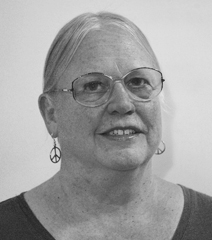February’s Crescenta Valley Community Association meeting covered a number of local land use issues. Glendale City Council has adopted an interim ordinance to regulate Accessory Dwelling Units that is a compromise between the previous ban and the permissive state regulations. California has mandated that these units be handled via ministerial review; that is by planning staff. They will not have to go to a design review board. In an attempt to avoid excessive density Glendale has limited the “granny flats” to a maximum of 500 square feet rather than the 1,200 square feet allowed by the state. The council also included some protections for historic zones. The Glendale rules will require rental of the units be for 30 days or greater to avoid the Airbnb type short-term rentals that have led to “party house” problems in some cases. If the main house on the property is also a rental, Glendale requires both units be rented by the same family. One big concern is that the state law prohibits requiring off-street parking for the additional unit. This may add to the already difficult parking situation in some neighborhoods. The interim ordinance was only for 45 days so staff members have requested it be extended for an additional 10 months and 15 days to give them time to explore other municipalities’ solutions and craft a permanent ordinance. This was scheduled to be considered at Tuesday night’s council meeting.
The developer of the mixed-use project at 3037-3045 Foothill Boulevard in the unincorporated portion of La Crescenta has submitted final plans to the county. CVCA Steering Committee member Sharon Raghavachary will review them to see if the promised changes to conform to the Community Standards
District have been made. We expect further updates at our next meeting on March 23.
As you may have read, the Arroyo Seco Foundation and the Pasadena Audubon Society were successful in their lawsuit to halt the proposed “Big Dig” at Hahamongna. From the ASF newsletter:
“ASF and Pasadena Audubon are pleased that Judge Chalfant recognized the severe flaws in the Flood Control District’s EIR. ‘Our goal has always been to reduce the devastating impacts of the County’s Big
Dig Program, not to stop it,’ said ASF Managing Director Tim Brick. ‘We seek a more moderate and sustainable stream and sediment management program that will protect the habitat in Hahamongna as well as our communities.’”
Another interesting observation from the ASF: “About 40 feet of water [was] collected behind Devil’s Gate Dam after the storm. The Flood Control District has been releasing water through the 13-foot tunnel that goes though the dam to slowly lower the level. Note that the water coming out of the tunnel on the downside of the dam is very muddy. Releasing water during and after a storm can actually lower the level of sediment in the basin. It will be interesting to see if there is more or less sediment in the basin after the rainy season.”
In other words, Mother Nature may be alleviating the problem of sediment buildup behind the dam. See arroyoseco.org for more information. If you appreciate not having 400 diesel truck trips per day for three-to-five years to remove the sediment (and mature trees, endangered species habitat, and recreational space), please consider donating to the Arroyo Seco Foundation and/or the Pasadena Audubon Society.
Regarding the ongoing fight to stop the proposed 710 Freeway extension tunnel, CVCA Steering Committee member Susan Bolan reported on AB 287 proposed by Assembly Member Chris Holden. The bill would require the Dept. of Transportation, in consultation with the Los Angeles County Metropolitan Transportation Authority, to establish the I-710 Gap Corridor Transit Study Zone Advisory Committee. It would prohibit the advisory committee from considering or recommending, and would prohibit the department from implementing, a freeway tunnel alternative. Vickere Murphy from State Senator Anthony Portantino’s staff reported on SB 275 which would set the value, for property tax purposes, of homes in the 710 corridor now being offered to long-term tenants at the sale price, not the probably higher actual assessed value. These are positive steps toward an eventual resolution of this long-standing problem.
John Reischel, VP of Development for the Olson Company, attended to begin discussion of a project at 2817 Montrose Ave. He is in the preliminary stage of considering a condominium development on the Glendale property that is adjacent to unincorporated Montrose on the north. Although zoning would allow up to 26 units, he noted that roughly 20 units are being planned.
The next Crescenta Valley Community Association meeting will be March 23 starting at 7 p.m. in the community room at the La Crescenta Library, 2809 Foothill Blvd. Park in the upper lot accessed from
La Crescenta Avenue. We will have updates on these and other local issues.
Our meetings are free and open to the public.

